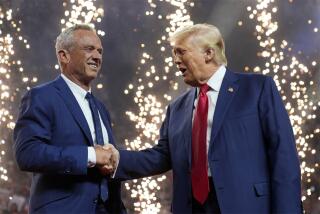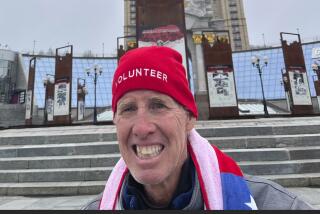JFK files detail CIA plans to kill Castro using the mob, poisoned swimsuits, exploding seashells

Cuban assassination plots involving exploding seashells and poisoned swimsuits. Bounties on the heads of high-profile communists. A secretive investigation that tracked John F. Kennedy’s assassin into Mexico.
As scholars, journalists and the merely curious on Friday pored through a tranche of nearly 3,000 newly released secret documents related to the 35th president’s assassination, there were few if any major plot twists about what happened that day in Dallas in 1963.
Instead, the files — which include secret FBI memos, handwritten notes from top White House officials, and CIA field reports — tell the story of America’s paranoid underworld in the 1960s, where shadowy figures chased secrets at home and abroad and hatched plots to change the course of history.
The newly released records shine a light on America’s covert operations at a time when America was deeply suspicious of its Cold War adversaries, combating Soviet influence around the globe and engaging in disastrous attempts to overthrow communist revolutionaries in Cuba.
The files portray the extent to which Kennedy’s death sent shockwaves across both West and East: An informant in the Soviet Union told U.S. officials that Kennedy’s death was greeted there “by great shock and consternation and church bells were tolled,” according to a top-secret Dec. 1, 1966, memo from then-FBI Director J. Edgar Hoover.
Soviet officials suspected Kennedy was killed by “some well-organized conspiracy on the part of the ‘ultraright’ in the United States,” part of what analysts in Moscow believed was an attempt to stage “a coup” in order to heighten tensions with the Soviet Union and communist Cuba, according to the memo.
The Russians described Kennedy’s assassin, Lee Harvey Oswald, who had visited the Soviet Union in 1959 and sought citizenship there, as too “mentally unstable” to defect and a “neurotic maniac who was disloyal to his own country and everything else.”
One FBI file shows how agents also tracked Oswald’s bus trip to Mexico City in October 1963. It included information that Oswald was wearing a “short sleeve light colored sportshirt and no coat,” seemingly innocuous information that had been classified to protect the FBI’s “operations in foreign country.”
For all that the new documents reveal, the reality is that the government’s most sensitive documents related to the sprawling, decades-long investigation into Kennedy’s assassination have yet to be released.
President Trump on Thursday ordered some records to remain secret for the next 180 days until they can be reviewed and redacted, after intelligence and law enforcement officials protested that some information in the records could compromise sources or America’s relations with other nations.
The most tawdry accounts in the files only loosely involve Kennedy’s assassination, focusing instead on the U.S. government’s own plots to kill foreign government leaders and politicians.
One top-secret White House document detailed a proposal to create “Operation Bounty” to assassinate prominent Cuban communists — suggesting up to $20,000 to kill communist informers, up to $100,000 for Cuban government officials, and a morbidly cheeky 2 cents for the death of Fidel Castro.
Some ideas to assassinate Castro included using the Mafia, which displeased Kennedy’s brother, U.S. Atty. Gen. Robert F. Kennedy, “because at that time he felt that he was making a very strong drive to try to get after the Mafia,” said one top-secret 1975 document that was prepared for the Rockefeller Commission, which in the 1970s investigated CIA activities inside the U.S. “His comment was to us that if we were going to get involved with the Mafia, in the future at any time, to make sure you see me first.”
That document alludes to the existence of a 1967 memo from then-FBI director J. Edgar Hoover titled “Central Intelligence Agency’s Intentions to Send Hoodlums to Cuba to Assassinate Castro.” Hoover’s memo said that one CIA-offered payout for the Mafia killing Castro wasn’t 2 cents, but $150,000, and noted skeptically that one Mafia member was “using his prior connections with CIA to his best advantage.”
As a result, Robert F. Kennedy “issued orders that CIA should never again take such steps without checking with the Department of Justice.”
Some of the proposed plots involved placing botulism pills in Castro’s food, with the CIA’s director of security at one point testing the pills on some guinea pigs “because I wanted to be sure they worked.” Pills were sent to “assets” in Cuba who tried to poison Castro at a restaurant, but failed.
Another CIA plot was based on Castro’ fondness for diving, and proposed “to dust the inside of the suit with a fungus that would produce a disabling and chronic skin disease, and also contaminating the suit with tuberculosis bacilli in the breathing apparatus.”
Another one involved a “booby-trap spectacular seashell which would be submerged in an area where Castro often skindived. The seashell would be loaded with explosives to blow apart when the shell was lifted.” But plotters dejectedly discovered that “there was no shell in the Caribbean area large enough to hold a sufficient amount of explosive.”
That document also reviewed the Central Intelligence Agency’s efforts to assassinate other foreign leaders, including discussions about killing Democratic Republic of the Congo leader Patrice Lumumba, who was shot to death in 1961, three days before Kennedy’s inauguration. The agency denied playing a role.
The records also detail how the CIA organized a group of “internal dissidents along with several exile organizations” that successfully assassinated Dominican Republic dictator Rafael Trujillo on May 30, 1961.
The agency offered to train one of the killers in the use of explosives and sent three revolvers and three carbines to the plotters, one of which was left at the scene, according to a report compiled by the Rockefeller Commission in 1975. The State Department, it said, thwarted one plan to send four submachine guns in a “diplomatic pouch.”
“We have concluded that there was an improper level of American involvement in the death of Generalissimo Trujillo,” the Rockefeller memo said.
Presidential researcher Ken Hughes of the University of Virginia’s Miller Center says “the government is still withholding the best documents” — that is, information not just on Kennedy’s death, but about America’s foreign policy in the 1960s.
“We still need to see the CIA’s internal report on the US government’s role in the overthrow of President Ngo Dinh Diem of South Vietnam,” who was assassinated less than a month before Kennedy’s death, Hughes said in an email.
“The documents they’re holding back may not tell us JFK’s position on the coup, since the CIA gives presidents plausible deniability in sensitive covert operations, but they should at least tell us what our government was telling the coup plotters before they overthrew and assassinated their president.”
But these are the Kennedy files, after all. “And in case you’re wondering,” Hughes added, “No, I don’t think JFK was assassinated in retaliation for Diem’s assassination.”
Matt Pearce is a national reporter for The Times. Follow him on Twitter at @mattdpearce.
FROM THE ARCHIVES:
Op-Ed: Lee Harvey Oswald’s little green book shows JFK wasn’t the real target
JFK assassination: L.A. cultural groups remember
JFK death 50 years later: Gov. Jerry Brown recalls encounter
Remembering John F. Kennedy’s ‘effortless’ style 100 years after his birth
UPDATES:
2:10 p.m.: This story was updated with additional details from the documents and an interview with a Kennedy-era historian.
11:45 a.m.: This story was updated throughout with staff reporting.
This story was originally published at 10 a.m.
More to Read
Sign up for Essential California
The most important California stories and recommendations in your inbox every morning.
You may occasionally receive promotional content from the Los Angeles Times.











